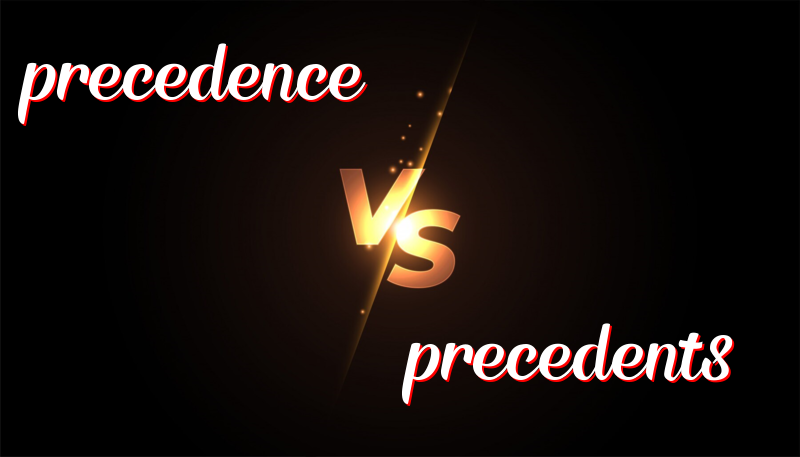Understanding the Difference Between Precedence and Precedents
Understanding the Difference: Precedence vs. Precedents
Some words sound the same but mean different things. Two such words are precedence and precedents. Let’s understand what each word means and how to use them correctly.
History and Meaning
Precedence comes from the word “precede,” which means to come before something else. It talks about importance or priority. If something takes precedence, it is more important and needs to be done first.
Precedents comes from the word “precedent.” A precedent is an earlier event or decision that can be used as an example or guide for future actions. It is often used in law to talk about decisions in past legal cases that help decide what to do in new cases.
Using the Words
How to Use “Precedence”
- The teacher gave precedence to students who asked questions.
- In a fire, safety takes precedence over everything else.
- The company gives precedence to quality, not speed.
- When planning, urgent tasks have precedence.
- Family matters usually have precedence over work.
How to Use “Precedents”
- The judge considered old court precedents before making a decision.
- There are no precedents for such a strange situation.
- Lawyers look at precedents to understand how the court might rule.
- The case set a new precedent for future legal decisions.
- Precedents help us understand what actions are allowed.
Trick to Remember the Difference
Precedence is about what comes first or is most important. You can remember it by thinking of “C” for “comes first.”
Precedents is about past examples or decisions. You can remember it by thinking of “T” for “tried before” or “past time.”
Summary
To sum up, precedence is about priority, like what comes first or is most important. Precedents are past examples or cases that help guide future decisions, mainly in law. Use these words carefully to make your writing clear and correct.

Leave a Reply
You must be logged in to post a comment.